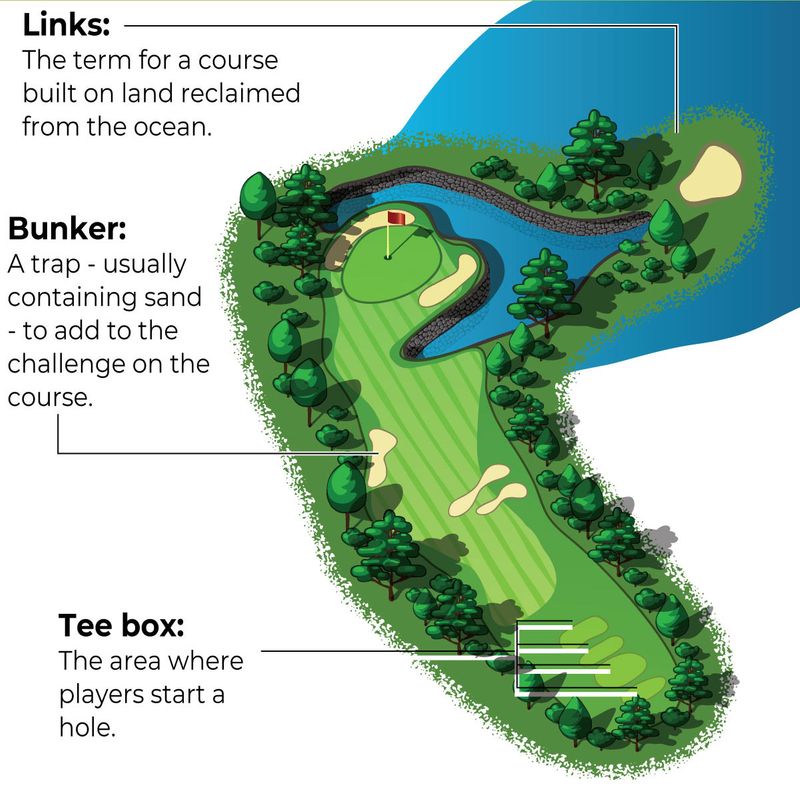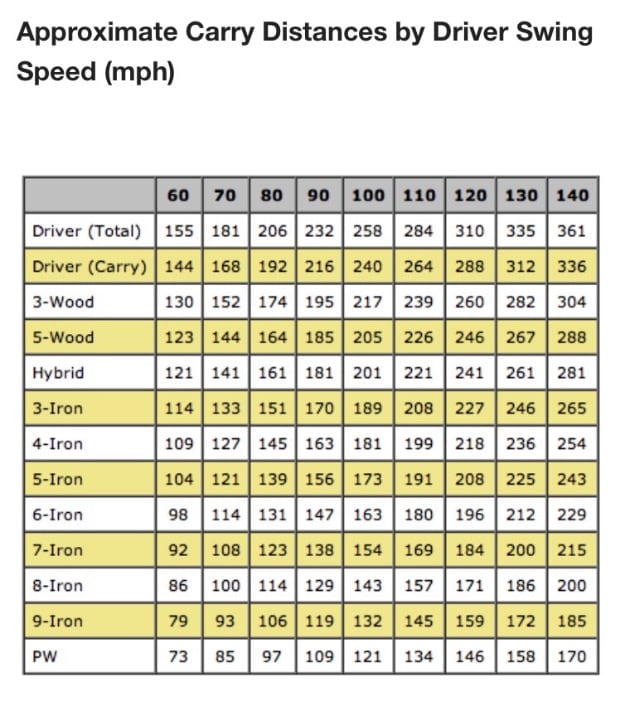
When it comes to golf clubs, there are several different types. There are many types of golf clubs: drivers, fairway woods and hybrids; irons, irons and hybrids are all examples. Your game, preference, and level of skill will dictate which type you choose. Woods are great for long drives, and they are a good choice for players with trouble keeping the driver straight. They can also be used to hit the ball in the fairway, even if the driver is not available. However, they aren't as flexible as short irons and allow for more error. They can be difficult to hit flush in the rough and in tricky lays.
Driver
The driver is undoubtedly the most important club, and the most difficult to master. The driver is responsible for the most area of the face as well as the most error margin, so it's important to properly tee off. Other golf clubs are used for long shots, such as the woods. Woods are hollow-bodied, large-headed clubs that are generally used when a golfer is at least one hundred fifty yards from the green.
Fairway woods
Fairway woods are a great choice for golfers who want to hit the ball as far as possible without sacrificing accuracy. Although they are very similar to drivers, their heads shape is quite different. The loft of a fairway wood is usually between 15 and 18 degrees. This loft is often adjusted to give the golfer the best possible shot. Keep in mind, however, that poor contact with the ball could negate the benefits of a loft that is higher.

Hybrids
Hybrids offer great options for high handicappers and mid-handicappers. They are consistent, forgiven, and can travel a long way. However, they come with their share of downsides, so be sure to consider them before making your final decision. Hybrids work well for most golfers. They can help improve your shots around the green as well as your launch.
Irons
For long shots, you can use irons as a golf club. There are many different types of irons. However, some are better for specific types of players. Super game improvement irons might be more appealing to a beginner. These types of irons feature large sweet spots that help beginners hit the ball further and with greater accuracy. These irons are also very forgiving. They still produce a decent amount of distance and height.
Woods
The clubhead of a wooden wood is roughly spherical, with a flattened bottom. This shape allows the club's head to glide over the ground when swinging. The traditional wood clubhead was made from ash or beech wood, but modern wood clubheads are made from composite materials, such as titanium and hollow steel. These are sometimes called metalwoods. Pinseeker Golf Corp. introduced the Bombshell, the first metalwood, in 1976.
Metal woods
While metal woods used for golf clubs have been around since the early days, there are some key differences. They have low spin and high launches and can be used with specific types of swings. This has allowed manufacturers to develop golf clubs that have greater performance potential.

Pitching wedges
Pitching wedges is a function that allows golf clubs to hit the ball softly and high. This is achieved through a steep angle of attack, which causes the club to dig into the turf and produce backspin. This type shots often stops on a dime. This type of shot creates more spin, which allows the golfer to have greater control over their shot.
FAQ
What is a "bogey"?
A bogey refers to a fictional number that is used as a target by golfers. It is not part the game; it is a way to keep score. The player who shoots closest to the number wins the hole.
Jock Utchison, the first professional Scots golfer, came up with the idea for a bogey. He had been playing alone at home when he came up with this idea.
He wanted to keep track on how he was doing against his own self, so he wrote a number down on a piece o paper and stuck it to the wall above him bed. This was later called the "Hutchy Bogey."
What type of clothing should i wear on the course
Dress appropriately for golf. You should wear:
-
Proper shoes - Golf shoes should fit snugly on your feet. They should offer stability and support.
-
Lightweight trousers and shorts - The bottom of the pants should reach your knees. Trousers should be long enough to allow you to bend easily.
-
Long-sleeved shirt. Your shirt should be sun-protective. It should be breathable.
-
Shorts or sweatpants - Pants should not be tight and uncomfortable. They should allow you to move freely.
-
Socks - Wear socks that feel soft and comfortable.
-
Hat - Choose a hat that fits well. It should cover your ears and neck.
-
Sunscreen lotion - Apply sunscreen before you leave for the golf course.
What's the best time to golf?
Playing golf between May-September is the best time. This time, it is usually mild and there is no rain.
Winter months can be very cold. In addition, snowfall makes it difficult to walk the fairways.
Spring and autumn can be difficult because the grass grows too high.
What kind of clubs do I need?
There are many kinds of clubs. The driver is the most common type of club. This allows players to hit more balls. Other clubs include woods, irons, wedges, and putters.
Woods are longer clubs made to allow players to play closer to the pin and still be able to reach green. These clubs are used for long drives or approaches.
Irons are shorter clubs, which are made to allow players to hit the ball closer towards the pin. They are often used to chip and putt short distances.
Wedges are specialized clubs that are used to control the flight path of the ball. They are normally used for shots requiring precise direction.
Putters are small clubs used to move the ball towards the cup. They can be used by players for short putts.
The type of club you use depends on what type of shot you want to make. Different types shots can be served by different clubs.
For example, drivers are useful for hitting the ball far away from the hole. Wooden are perfect for driving the ball long distances. Irons are ideal for short shots. The ability to control the ball's flight is a great advantage of wedges. The perfect tool for rolling the ball in the hole is the putter.
What is a handicap?
Golf can make it difficult for you to keep up. It is possible that you have difficulty scoring well because of your slow or fast pace. You could also hire a caddy to help you carry your bag.
For beginners, it is a good idea to take advantage of local services. Your handicap will be determined based upon your gender, age and skill level.
Then, your handicap will be used to calculate your score. Your handicap will indicate which group you fall into. This will help you compete better against other players with similar abilities.
How do you practice your golf swing.
Practice makes perfect! Any sport needs practice. Practice is essential if you are to improve your golf game. You will become familiar with the fundamental mechanics of the swing if you practice.
Practice using both hands. First, practice with shorter shots. Then, work on longer drives. Finally, practice chipping/putting.
Statistics
- He shanked the first attempt, but it is estimated his second went more than 200 yards (180 m).[52]Golf courses worldwide. Below are the top 20 countries with the most golf courses as of 2019.[53]CountryNumber of (en.wikipedia.org)
- They do this by means of assessing and rating courses according to the average good score of a "bogey golfer," a player with a handicap of around 20. (en.wikipedia.org)
- They do this by means of assessing and rating courses according to the average good score of a "bogey golfer," a player with a handicap of around 20. (en.wikipedia.org)
- In the United States, women made up 25 percent of golfers in 2021, which was up from 19 percent in 2011, and junior female golfers account for 35 percent or 1.1 million golfers.[50] (en.wikipedia.org)
External Links
How To
How to Get the Perfect Bunker Shot
A bunker shot, a type or golf shot that aims at a particular spot on the green (the holes) to ensure your ball hits the ground without bouncing off of the surface, is one example. This is accomplished by taking advantage on the slope of green. The goal is to direct the ball as far as possible towards hole.
Playing golf requires you to determine the best line for reaching your target. Consider factors like how far you are from your target, the terrain, whether the ball should bounce off the ground, or fly straight, as well as weather conditions.
Understanding the laws of physics is essential to executing a flawless bunker shot. First, you should determine if you are going uphill or downhill. A drawing club is required if you are facing uphill. If you're facing downhill, you'll need to swing with a fade. Next, you'll need to figure out how fast you need to move your body in order to stop the ball from bouncing off the green. This can be done using the angle between you and the ball. Finally, you will need to know how big the bunker is you're trying to hit.
Once you've got these things figured out, it's time to start swinging. You should swing hard enough to allow the ball to pass the face of your club head, but slow enough so that it doesn't bounce off the green. Once you've established the best speed and trajectory, it is time to start your approach. Slowly approach the ball until you can see the landing area. Then, take one last look at the ball before releasing it. If everything goes according the plan, you should get a perfect shot at bunker.